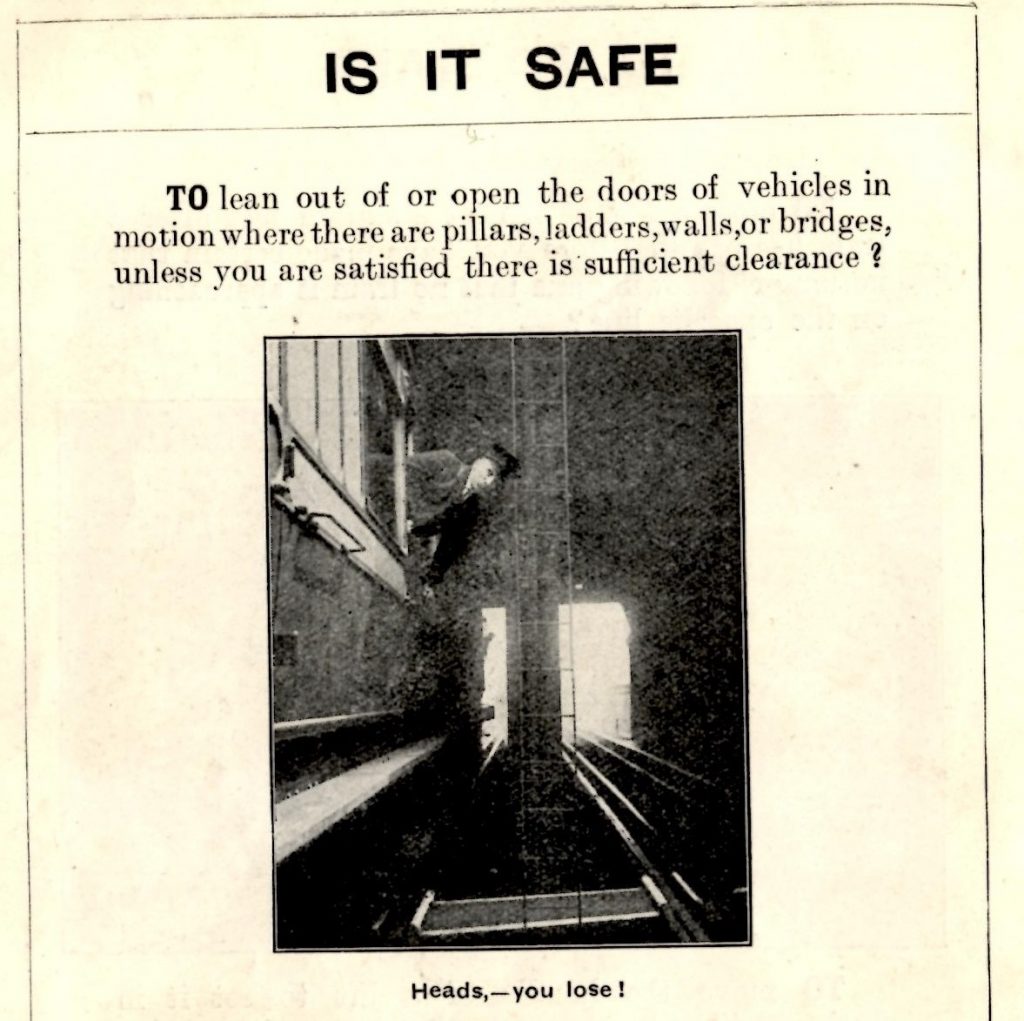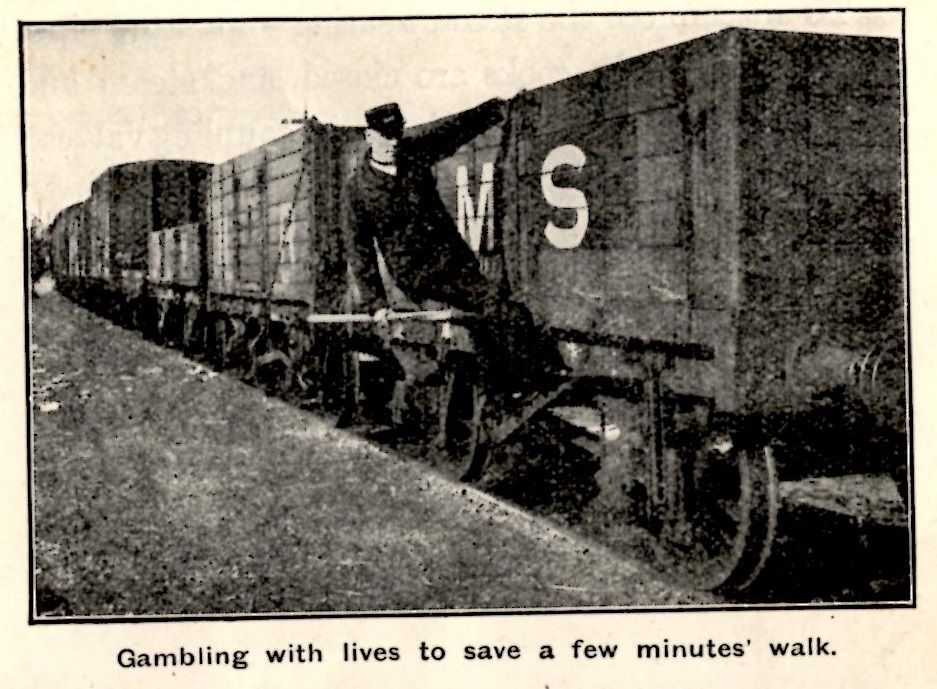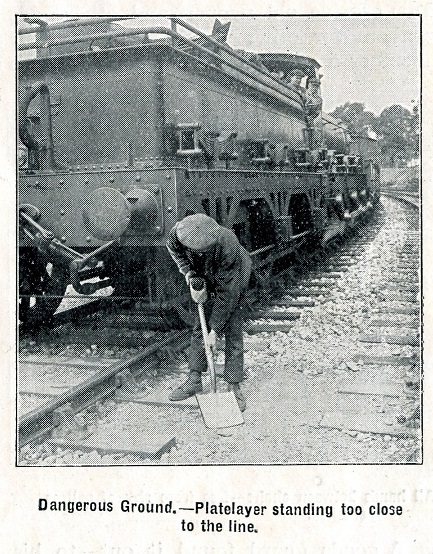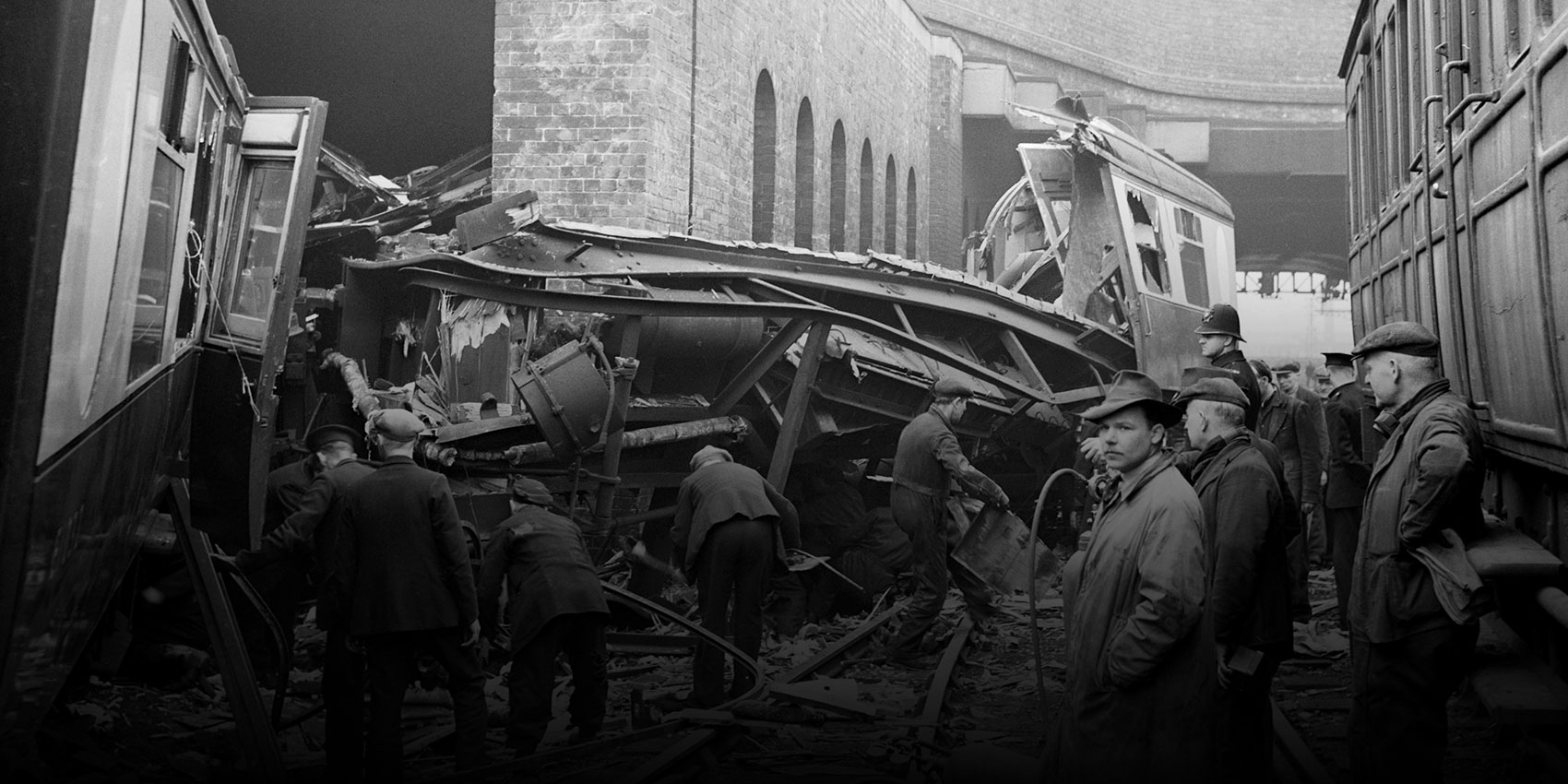We’ve written about the Railway Work, Life & Death project on this blog in the past, to introduce our work and to tie in with Disability History Month. This time we thought a brief update might be helpful, along with a note about how you can come along to meet some of the people behind the project and find out more.
For those who aren’t familiar with our work, our project is a collaboration between the National Railway Museum and the University of Portsmouth, exploring the experiences of UK railway workers and the accidents they suffered. Our free database, available on our website, gives a plethora of details about the 3,915 accidents involving railway workers between 1911 and 1915 that were investigated by the state’s Railway Inspectors. We cover the UK as it was in this period, so including what is now Northern Ireland and Ireland. As we now know, the accidents didn’t just include railway workers, but also some others who happened to be on the railways.

We’ve spent some time over the last few months cleaning up the database and adding in new details, hopefully making it more interesting and useful for you. There are some incredible—and incredibly sad—stories in the database, whether of the 14-year-old boys or men in their 70s killed at work, or of the people who had more than one accident. The database covers over 140 companies or organisations—more than the pre-Grouping total of railway companies, as you’ll appreciate, as the Railway Inspectors also investigated accidents on London’s underground lines, and in some private docks and harbours.

What we see is a litany of accidents, from the slight, through the severe, to the 777 fatalities recorded. We get a sense of the rules and regulations which were in place (if not followed or enforced) and the economies that were used to try to save a penny or two (like the rope that had previously been broken, but which was knotted—and then broke again, injuring a capstan worker). The database provides us with a really valuable insight into actual working practices on the railways around the time of the First World War. So, if you haven’t yet made use of it, we invite you to go and explore the detail and tell us what you make of it all.

We’ve been getting out and about giving talks about the project—and we’re always happy to do more, so just get in touch. Our website has been going from strength to strength, with a blog updated at least weekly and featuring cases taken from the database. We’ve just passed over 10,000 views since August 2017, which we think is a good sign—particularly as these views have come from across North and South America, Australia and New Zealand, as well as Europe.
We’ve also made some fantastic connections via our Twitter account, hopefully leading on to future work. We’ve had great interest in the project, particularly from family historians but also the current rail industry. All of the feedback we’ve had so far has been overwhelmingly positive, including requests for us to carry the project on after our current cut-off date of June 1915.
On this note, we’re now investigating what we might be able to do to extend the project coverage. We’ve recently had some very promising discussions with both the Office of Rail and Road (the current industry regulator) and The National Archives, to do with bringing new records into our coverage. We will be looking for volunteers to help with this, so let us know if you’re interested and keep watching this space!
In the meantime, do get in touch—we’re keen to hear what you think about our project and to have your suggestions for our next steps. Or perhaps you might like to tweet us an image relating to railway worker safety? It might be from the National Railway Museum collections (there’s plenty there!) or another institution, or it might be something from the present, on today’s railway network—we’re always interested.
Even better, if you’re in York on Friday 20 April, you can come along to the National Railway Museum and meet us. We’re discussing our project as part of the Museums in Context and Partnership conference, as part of the museum’s collaboration with the University of Sheffield on the Railway Cultures project. The conference will be looking at the role of heritage institutions in cities and communities, and how these institutions might work with different groups. The line-up looks really interesting and perhaps best of all, it’s free. So, if you want to find out more about the whole area and our project in particular, as well as contribute to the discussions, do come along.
Full details about the conference, including registration and programme are available on the University of Sheffield website. You book your place via Eventbrite.
We’re excited to be playing a part in the conference, talking about our project and what we’ve learnt, both in terms of the detail about railway worker accidents and the methodology of working together. Project leads Mike Esbester (University of Portsmouth) and Peter Thorpe (National Railway Museum) will be presenting alongside each other, thinking about the benefits and challenges of collaborative working, as well as spreading word about the project. We’re really looking forward to the discussion element of the conference, as this is all about sharing experiences and learning from each other—particularly important to us as we’re increasingly working not just between the museum and Portsmouth, but also with other groups, like family historians.
All told, there’s a lot going on—hopefully you’ll join us via one route or another.
